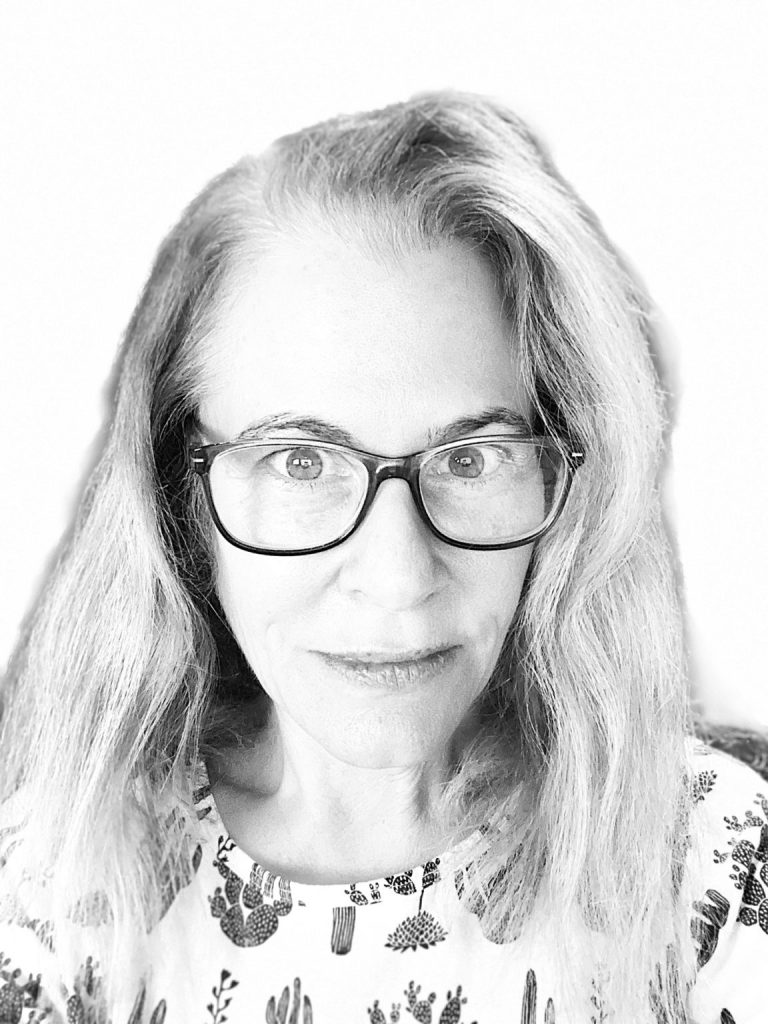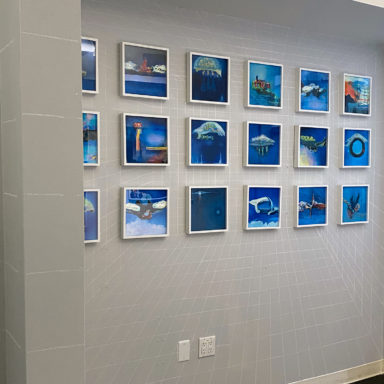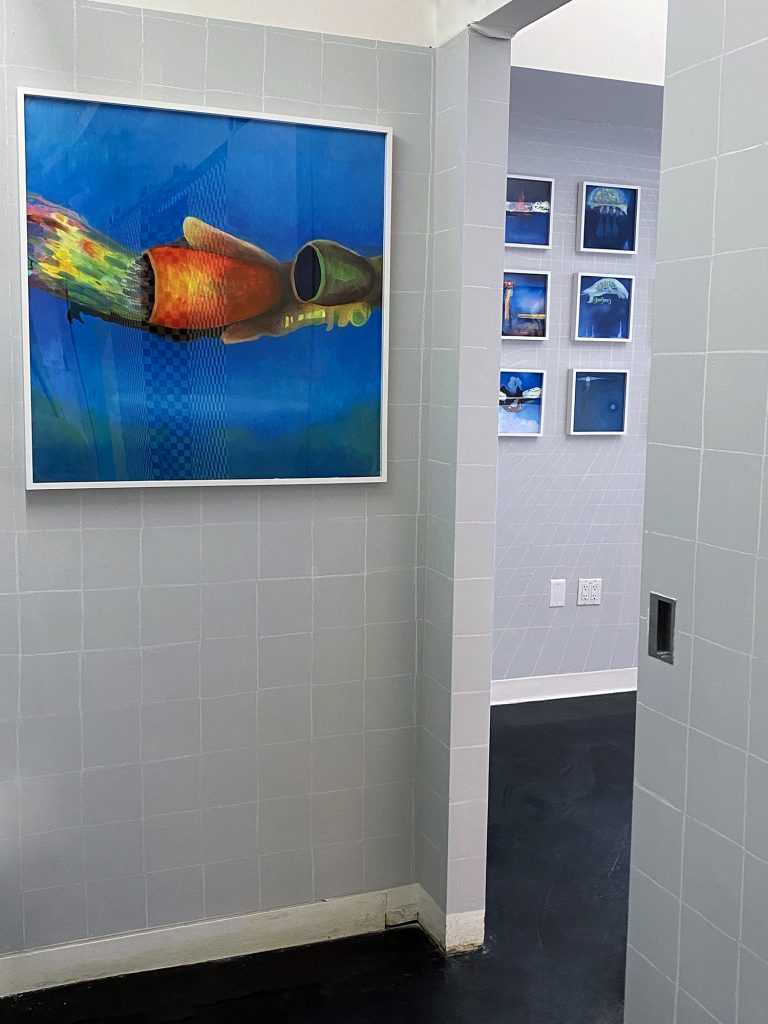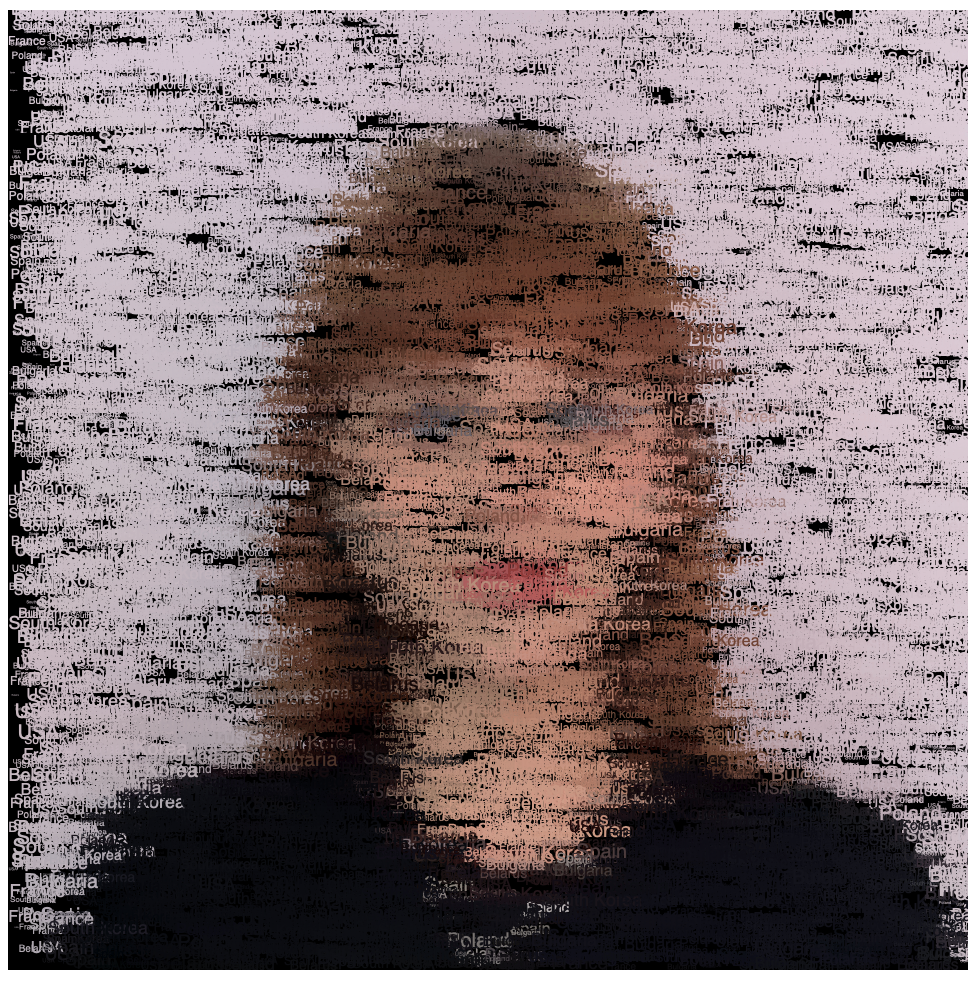let img;
let min, max;
function preload() {
img = loadImage('https://i.imgur.com/Wup8Ien.jpeg');
}
function setup() {
createCanvas(480, 480);
min = 4;
max = 40;
imageMode(CENTER);
noStroke();
background(255);
img.loadPixels();
}
function draw() {
let randomVal = map(random()*300, 0, width, min, max);
let x = floor(random(img.width));
let y = floor(random(img.height));
let pix = img.get(x, y);
fill(pix, 128);
triangle(x, y, x+randomVal, y, x+randomVal/2, y+randomVal);
}My art creates randomly sized triangles that match the colors of pixels in an image. They are continuously drawn, and you can eventually see the face that is being created. I chose a picture of a redhead on imgur because I thought it would be fun to see his bright hair.
![[OLD SEMESTER] 15-104 • Introduction to Computing for Creative Practice](../../wp-content/uploads/2023/09/stop-banner.png)












